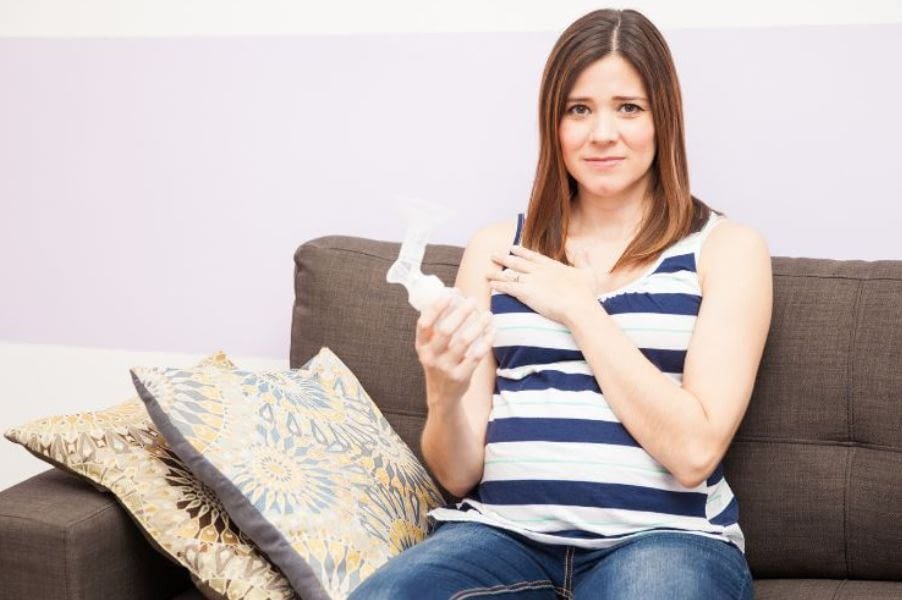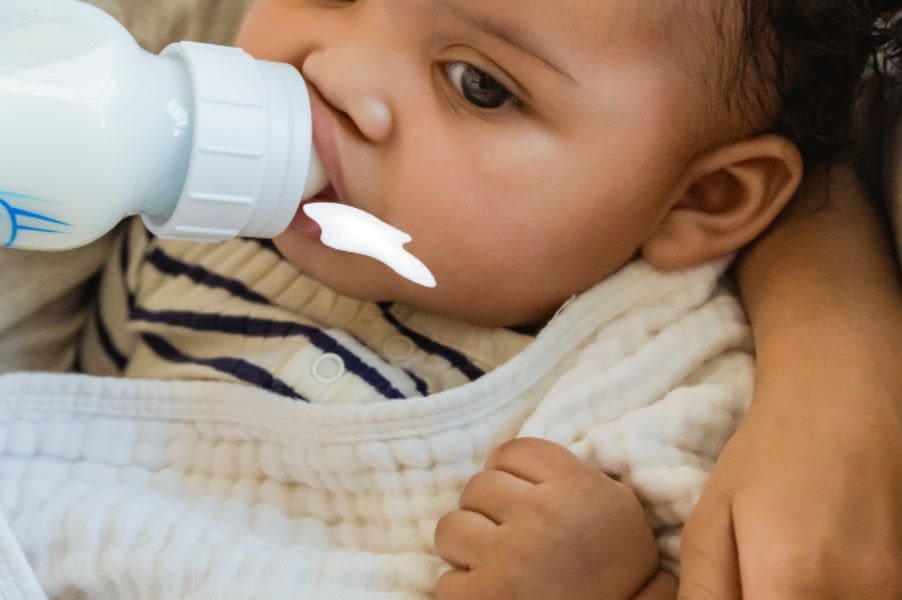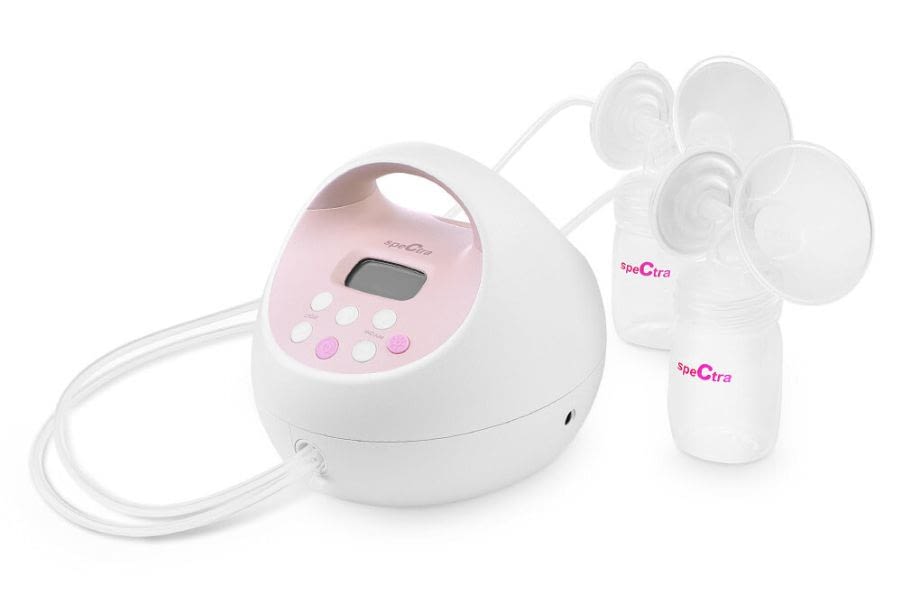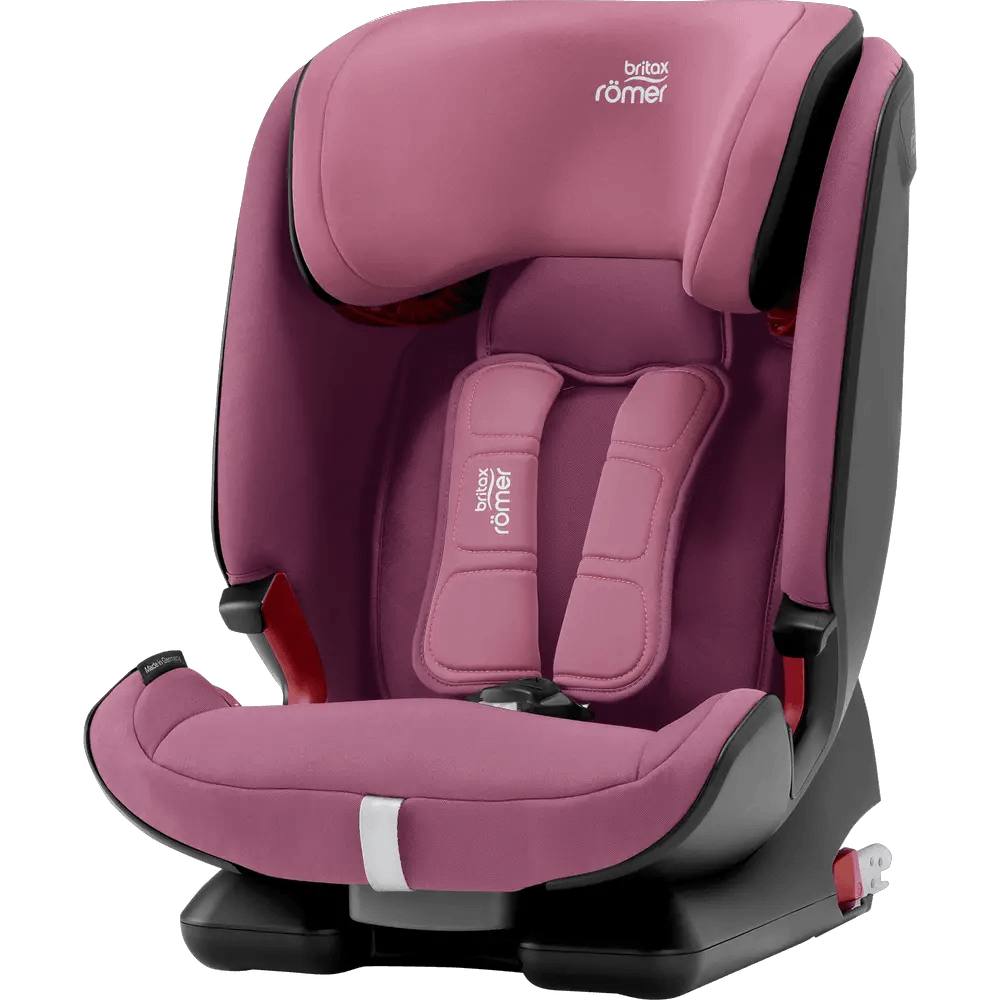As a breastfeeding mother, you know the discomfort of engorgement all too well. When milk production suddenly increases, and emergency pumping is needed during an unavoidable absence from your baby, how can you ensure that you don’t continue to be uncomfortable?
The answer: the amazing Haakaa pump! This revolutionary product is specifically designed to make relieving engorgement easier for mothers — it’s a simple yet powerful tool that allows parents to alleviate milk buildup while ensuring comfort and safety quickly.
So, let’s explore how to use Haakaa to relieve engorgement and why using a Haakaa pump is an effective solution for dealing with sudden or prolonged periods of breast fullness due to changes in milk supply.
Understand the Basics of Haakaa Pump – what and how it works.
The Haakaa pump is a manual breast pump made from 100% medical-grade silicone. It’s compact, eco-friendly, and easy to use – allowing you to express milk hands-free. The Pump operates on a simple principle of suction.
All you need to do is squeeze the base of the Haakaa, position it over your nipple, and then let it do its work. It draws milk out naturally without requiring any mechanical or manual pumping action.

How long to use Haakaa pump?
The duration of using a Haakaa breast pump depends on the individual’s comfort and the amount of milk produced. Generally, it is recommended to use the Haakaa for 10-15 minutes per breast during each feeding session.
Its unique design makes it a perfect tool for capturing let-down from one breast while nursing or pumping on the other, ensuring that no precious milk goes to waste.
Can you use Haakaa as manual Pump?
The Haakaa pump boasts several features that make it an excellent choice as a manual pump for relieving breast engorgement, letting down reflexes, collecting leaking milk, and increasing milk supply.
Early breastfeeding days to relieve engorgement

In the early days of breastfeeding, some mothers may experience engorgement – a painful condition where the breasts become overly full with milk. The Haakaa pump can be an effective solution during this period.
It helps to gently extract excess milk, relieving the pressure and reducing the discomfort associated with engorgement. Moreover, it allows mothers to store milk for future feedings, which can be a relief, especially when milk production is high.
Having a Haakaa pump on hand during the early days of breastfeeding can ease the transition into this new phase of life, ensuring both the mother’s comfort and the infant’s nutrition.
To stimulate the let-down reflex.
The let-down reflex is triggered by hormones during breastfeeding. The Haakaa pump can be an effective tool in stimulating this reflex.
So, How to use Haakaa as manual Pump? Attach the Pump to your breast, and its gentle suction mimics the nursing pattern of a baby, helping stimulate the let-down reflex. You may find it helpful to apply a warm compress to your breast before using the Pump, as warmth can aid in promoting the let-down reflex.
Additionally, finding a comfortable and calm environment can help, as stress or distraction can sometimes inhibit let-downs. The simplicity and ease of use of the Haakaa pump make it a reliable option to stimulate the let-down reflex, ensuring an efficient and comfortable breastfeeding experience. But how often should I pump at night?
To catch and collect leaking milk.
Leaking milk is common for many breastfeeding mothers, particularly during the early days postpartum and during feeding sessions. The Haakaa pump can be a game-changer in these situations. Instead of letting this precious milk go to waste, you can use the Haakaa pump to catch and collect it.
So, How to use Haakaa to relieve engorgement while nursing? Attach the Pump to your other breast while nursing your baby. The gentle suction will not only help in collecting the leaking milk but also stimulate more milk production. This milk can be saved later, ensuring no drop is wasted.
Remember to clean the Pump thoroughly after each use and store the collected milk in a clean, sealed container. By using the Haakaa pump in this way, you can maximize your milk supply and make breastfeeding a more efficient process.
To increase demand for milk, and thus, supply.
The principle of supply and demand is just as applicable to breastfeeding as to economics. The more frequently and effectively your baby feeds, the more milk your breasts are signalled to produce. Use the best pumps to meet this your baby’s need.
So, does Haakaa pump increase supply? By increasing the frequency of ‘feeds’ through pumping sessions, you’re sending your body signals to produce more milk.
And how long to leave Haakaa on? Using the Haakaa pump for about 10-15 minutes after nursing or until the milk stops flowing is recommended. Always remember that every drop counts.
Even if it doesn’t yield much milk at first, this extra stimulation will increase demand and stimulate greater milk production over time. This practice, paired with regular hydration and a balanced diet, can effectively boost your milk supply to meet your baby’s growing needs.
To Resolve clogged duct
If you are having the issue of a clogged duct, it can be quickly resolved with a Haakaa breast pump. For this, you need to squeeze it a little longer until the milk flows.
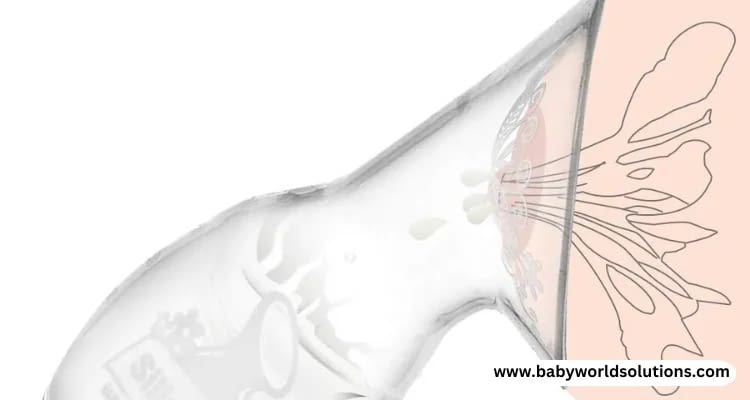
How to use Haakaa for clogged duct
To use a Haakaa for a clogged duct, follow these simple steps:
- Before starting, warm your breast with a warm compress or shower. This helps to open up the milk ducts.
- Apply a lubricant like olive or coconut oil around your nipple to create a good suction seal.
- Squeeze the base of the Haakaa, place it over your breast, ensure your nipple is centered, and then release the bottom to create suction. Adjust the Haakaa to target the area where you feel the clog.
- Leave the Haakaa on for about 10-15 minutes. You should start to see milk flowing into the Haakaa. Repeat this process as needed until the clog is resolved.
How to use Haakaa to relieve engorgement?
Prepare Your Breasts for Use of the Pump
Before using the Haakaa pump, it’s essential to prepare your breasts properly to ensure effective milk expression and maintain hygiene:
- Washing Your Breasts: Always start with clean hands and breasts. Wash your breasts gently with warm water and mild soap, focusing on the nipple and areola.
- Applying Warm Compress: A warm compress to your breasts can stimulate blood flow and aid in milk let-down. You can soak a clean washcloth in warm (not hot) water, wring it out, and then place it on your breasts for a few minutes before pumping.
- Massage: A gentle breast massage can also be beneficial in stimulating milk flow. Start from the outer part of your breasts and work your way towards the nipple with gentle, circular motions.
- Positioning of the Pump: Make sure the Pump’s flange is centered over your nipple, creating a seal against your skin. The Haakaa pump’s flexible silicone design should comfortably adjust to the shape of your breast.
This preparation process can cultivate a comfortable environment for milk expression, improving the overall effectiveness of your pumping experience.
Six simple steps: How to use a Haakaa breast pump
Here’s a step-by-step guide on how to use a Haakaa pump correctly:
- Position the Flange: Start by positioning the flange over your nipple, ensuring that it is centered correctly. The flange is the funnel-shaped part of the pump that comes into contact with your breast.
- Create a Seal: Squeeze the bottom part of the Pump to create a slight vacuum that will establish a secure seal against your breast. Make sure the whole nipple is inside the flange and comfortable.
- Release to Attach the Pump: Slowly release your grip from the pump’s base, allowing the vacuum to draw your nipple into the flange. This should attach the pump securely to your breast.
- Adjust as Needed: If you feel discomfort or the pump is not attached, break the suction by inserting a finger into the side of the flange and repositioning. Repeat the steps until you find a comfortable and practical position.
- Let the pump Do the Work: Once appropriately attached, the Haakaa pump will utilize natural suction to help express milk without further manual operation.
- Removing the Pump: When you’ve finished pumping, or the pump is complete, break the suction by lifting the edge of the flange from your skin to release. After use, remember to clean the Pump per the manufacturer’s instructions.
Remember, everyone’s body is different, so don’t worry if you need to adjust the Pump a few times to find the right position. The most important thing is that you’re comfortable and the Pump effectively collects milk.
4 Tips on How to Maintain Your Pump and Keep It in Good Condition
Maintaining your Haakaa pump and keeping it in good condition is essential for practical and hygienic milk extraction. Here are some tips:
- Cleaning After Each Use: After each use, clean the Pump thoroughly with warm soapy water. Rinse it properly and ensure no soap residue remains. You can use a clean cloth to dry it completely and store it in a clean and dry place.
- Inspect Regularly: Check for any signs of wear and tear regularly. It includes cracks or discoloration. If you notice any, replace the Pump immediately to ensure hygiene and effectiveness.
- Avoid Boiling for Extended Periods: While it’s important to sterilize the Pump regularly, avoid boiling it for longer than the recommended time to prevent damage.
- Store Properly: When not used, store the Pump in a clean container to prevent contamination.
Read Also: 15 Best Breast Pumping Tips For New Moms In 2023
4 Common mistakes to avoid when using the Haakaa pump
After knowing how to use Haakaa hand pump, you should avoid these mistakes:
- Overmilking: Avoid using the Pump for extended periods, as this can cause nipple soreness and lead to overproduction of milk.
- Not Cleaning Properly: Failing to clean the Pump properly can lead to bacterial growth and potentially harm your baby.
- Incorrect Positioning: Make sure the flange is centered over your nipple. More than proper positioning can lead to ineffective milk extraction and discomfort.
- Ignoring Discomfort: If you feel any discomfort or pain while using the Haakaa, stop and adjust. Continuing to pump in the face of discomfort can cause damage to your breast tissue.
Why did my haakaa stopped working?
There could be several reasons why your Haakaa breast pump has stopped working effectively. One possibility is that the suction needs to be stronger. This could be due to the positioning of the Pump, as it needs to be correctly aligned to create effective suction.
Alternatively, it might be due to the condition of the silicone itself. Over time and with regular use, the silicone may lose its elasticity, reducing its suction ability. Lastly, your milk supply may naturally fluctuate due to various factors such as diet, hydration, stress, or your baby’s feeding pattern.
Why do you need a manual pump?
- Ease of Use: The Haakaa pump is incredibly simple to use. With no small parts to assemble or batteries to replace, it’s ready to use instantly, which is ideal for sudden engorgement.
- Comfort: Thanks to its 100% medical-grade silicone construction, the Haakaa pump is soft and flexible. It is designed to fit all sizes and shapes, providing a comfortable pumping experience.
- Efficiency: The Haakaa pump uses gentle suction to draw out milk, reducing the discomfort associated with engorgement and helping to maintain a regular milk flow.
- Quiet: Unlike electric pumps, manual pumps operate silently, allowing you to pump discreetly whenever required.
- No Electricity Needed: Being manual, these pumps don’t depend on a power source, meaning you can use them anywhere, anytime.
- Control: Manual pumps provide more control as you can regulate the suction and pace, ensuring comfort during the process.
- Portability: The Haakaa’s compact size and lightweight design make it highly portable. Whether at home, work, or traveling, you can quickly and discreetly relieve engorgement.
- Eco-friendly: The Haakaa is free from harmful substances, and its reusable design makes it an environmentally friendly option.
- Affordable: Compared to electric pumps, the Haakaa is much more affordable, making it accessible to more mothers.
When can a manual breast pump be a saviour for breastfeeding mothers?
- During Work Hours: For working moms, manual pumps like Haakaa can be a boon. They can use them during breaks to relieve engorgement and maintain milk supply, even while they’re away from their baby.
- Traveling: When traveling, their compact size and independence from a power source come in handy. Mothers can use them in any location and situation, ensuring the baby’s milk supply is never disrupted.
- Nighttime Relief: Some moms experience engorgement at night. A manual pump can help relieve this discomfort and allow for a better night’s sleep.
- Regulating Milk Supply: Manual pumps can help balance milk supply if one breast produces more milk than the other. By pumping the fuller breast, mothers can ensure both breasts produce an even amount of milk.
- Baby’s Illness or Refusal to Nurse: If the baby is ill or refusing to nurse, a manual pump can help maintain the milk supply until the baby is ready to serve again.
- Donating Milk: For mothers who produce more milk than their baby needs and wish to donate, a manual pump can be a valuable tool to express and store the milk.
1 Visit today

